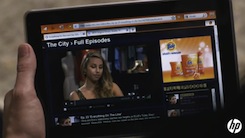 Even though all my computers are Macs and I have an iPhone, I’m not much interested in the iPad. No multi-tasking, no Flash, etc. The HP Slate, however, looks like a far more promising and versatile machine.
Even though all my computers are Macs and I have an iPhone, I’m not much interested in the iPad. No multi-tasking, no Flash, etc. The HP Slate, however, looks like a far more promising and versatile machine.
Liliputing is reporting that it will arrive in June, will run Windows 7. It will accept a keyboard, mouse, printer and external display, sue an Intel Atom processor, have a memory card reader and a camera.
I’m definitely holding off on an iPad until we learn more about this.


















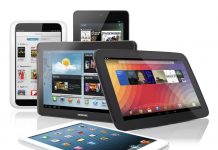
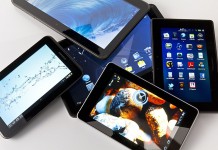
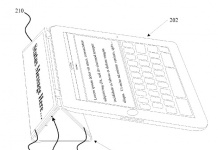

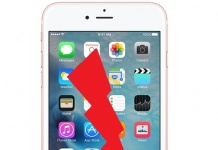











There are 2 big problems with all Win7 slates:
1. They use Atom (or x86-based) CPUs, all of which burn more power than ARM chipsets. In other words: you get 3 hours of battery instead of 10+
2. MS-Windows is a keyboard-based OS with a few nods to touch-interface. And programs that run on MS-Windows are also keyboard-based.
On the other hand, a Win7-based slate will run all the programs that run on Win7; there are a lot of free and open-source programs for MS-Windows; most of us are familiar with MS-Windows; Win7 has been liked, so far, by huge numbers of users.
So if you have a PC with Win7, you can mock up what this slate would be like by using only your mouse, and the onscreen keyboard. (Granted, typing letter-by-letter with a mouse or trackpad will be slower and more painful than tapping, so you’ll have to reckon that the slate experience will be marginally less painful.)
I’ve got a convertible TabletPC that I never use in slate form, for general computing such as web browsing, writing, emails, and so on. But I like it very much for reading ebooks (especially comics and PDFs). I also only use it plugged into the wall.
— asotir
Anyone can go to Best Buy right now and tryout an HP Smart Touch Laptop. It’s not a surprise or anything they have been trying to sell Windows Touch based for a while now and it sucks.
The article you’re quoting is taking the Euro price (€400) and translating it at today’s exchange rate – which is hardly ever how the prices actually compare. If HP are selling it at €400 in Europe, I’d expect a US price of $450 or so. They’ll (almost certainly) aim to undercut Apple, so I wouldn’t be shocked by a $400 price point.
As for discussion of battery life, etc – I’ll wait until we see some reviews before writing it off. Quite a few netbooks manage 5 hours or so, which for most uses would be fine.
For those who need a full OS like Win7, the HP Slate looks pretty good. For me, however, the Notion Ink Adam looks worth waiting for (est. September last I read): 10″ capacitive touch screen, only two ounces more than the iPad, multitasking (Android), plays Flash, can optionally run Ubuntu or Chrome, and has a Pixel Qi screen. My mild lust for the iPad died when I read about it. 😉
Any of these Windows 7 slates are a horrible idea. While Windows 7 is a big step forward for touch interface, the was majority of third party applications for windows fall in the range of horribly frustrating to completely unusable on touchscreens. You need a ecosystem that is touche from the ground up, like iPhone OS or Android.
The other problem is hardware. Either it will be so slow that you won’t be able to tolerate it, or the battery life will be so slow you will only be able to use it plugged in.
The Problem With Tablet Computers is that after 10+ years of existence they are still very much niche products. Still solutions in search of a problem.
I can see the same people who fawned over netbooks (as secondary computing devices, not the people who bought netbooks instead of full size laptops/desktops because they were cheap.) getting some of these cheap tablets because they already have a “full strength”/full size computer at home. But not enough to support the companies that seem intent on riding the Apple mindshare coat tails.
Comparing a Windows tablet, like the HP “Slate” (could have sworn there was a tablet computer in the 90’s with the same name), to an iPad is still an apples and oranges comparison.
An iPad isn’t a replacement for a computer but an extension of the Apple ecosphere. It’ll be useless if you don’t at least have SOME buy-in to the Apple “way of life”. People who want a “complete” computer in tablet form should be looking at the Slate, not iPad. (Although I’ll be getting an iPad, I might also pick up the “Slate” – assuming it is “Hackintosh-able” since I prefer OS X to Windows Anything for my personal/mobile computing devices.)
The point is all tablets will work or fail not just based on the OS but on the applications being touch based.
Flash was not built for touch screens. Windows either.
They can patch it but that’s not a complete solution.
If anything wait for Android Tablets since that again is built and developed specifically for touch based operations.
Hey, if that thing sues Intel, be sure and keep us caught up on the suit, ok?
On the subject of Netbook battery life: I have an Acer netbook with an 11″ WXGA display and I get an honest 8+ hours use out of it, with wifi enabled fulltime. It is rated for 9+ hours but I conk out before the thing does. And that is 2009-level tech. (Without wifi, my 6-year old HP TC1000 (running a Crusoe CPU) was good for 6+ hours as an ebook reader.)
For webpad use current Atoms are fine: the issue isn’t really the CPU, but rather the supporting chipset, hdd, and display. Which is where the new generation Intel chipsets are coming in handy; their power management is comparable to the CPU itself, which previous Netbook chipsets couldn’t claim.
The slate and its asian kin will likely weigh a tad more than the iPad but they’ll also offer full PC capabilities rather than an “appliance”-level subset; in the end it will come down more to brand loyalty versus capability.
I’m completely with Ted R above. I like both the Adam and HP’s Slate but touch response will be a major deciding factor. I really wish the iPad had Flash. That blue Lego sucks (I have an iPhone now).